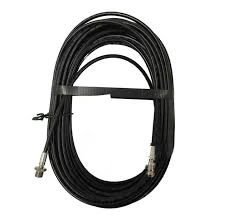Understanding Air Conditioning Piping Systems and Their Importance in HVAC Applications
Understanding Air Conditioning Pipes An Essential Component in HVAC Systems
Air conditioning (AC) systems are crucial in maintaining a comfortable indoor climate, especially during hot summer months. While most people are familiar with the large, visible components of cooling systems, such as the outdoor condenser units and indoor air handlers, the pipes that connect these elements play an equally important role in the efficient operation of an air conditioning system. In this article, we will explore the various types of AC pipes, their functions, and their significance in ensuring effective cooling.
Types of Air Conditioning Pipes
Air conditioning systems utilize two main types of pipes refrigerant lines and drainage pipes. Both types serve essential functions within the overall HVAC system.
1. Refrigerant Lines These are the primary pipes that carry refrigerant—the fluid used to transfer heat. Refrigerant lines are typically divided into two categories liquid lines and suction lines. The liquid line transports high-pressure refrigerant from the condenser to the evaporator coil. In contrast, the suction line carries low-pressure refrigerant back to the compressor after the heat has been absorbed inside the building. These pipes are usually insulated to prevent energy loss and maintain efficiency.
2. Drainage Pipes As air conditioners cool the air, they also dehumidify it, leading to the formation of condensation. To manage this excess moisture, drainage pipes are used to channel the condensate away from the indoor unit. This prevents water from accumulating and potentially causing damage to the AC system and surrounding areas. Proper installation and maintenance of drainage pipes are crucial to ensure that they do not become clogged, which can lead to water leakage and other issues.
Importance of Quality and Material
The selection of materials for air conditioning pipes is vital for system performance and longevity. Common materials used include copper, aluminum, and PVC.
air conditioning pipe

- Copper Pipes Known for their durability and excellent thermal conductivity, copper pipes are a popular choice for refrigerant lines. They can withstand high pressure and temperature fluctuations, which are standard in HVAC systems. Copper is resistant to corrosion, making it a long-lasting option.
- Aluminum Pipes Aluminum is lighter than copper and can also be used for refrigerant lines. While it may not offer the same level of thermal conductivity as copper, it is still effective and often more affordable.
- PVC Pipes These are typically used for drainage lines due to their resistance to corrosion and ease of installation. PVC is also lightweight and can be easily cut to length, which makes it a practical choice for drain systems.
Installation and Maintenance
Proper installation of AC pipes is crucial to the system's efficiency and effectiveness. A poorly installed pipe can lead to refrigerant leaks, reduced cooling performance, and increased energy consumption. Therefore, it is essential to engage a qualified HVAC technician for installation.
Regular maintenance is also important. Homeowners should periodically inspect both refrigerant and drainage pipes for signs of wear, damage, or leaks. Any issues should be addressed immediately to prevent larger problems down the line. Keeping the drainage pipes clear is particularly crucial to avoid water damage and ensure that the AC system operates smoothly.
Conclusion
In conclusion, while air conditioning pipes may not be the most glamorous aspect of HVAC systems, they are vital for effective cooling and energy efficiency. Understanding the types of pipes used, their materials, and the importance of proper installation and maintenance can help homeowners appreciate this often-overlooked component of their air conditioning systems. By ensuring the integrity of these pipes, one can extend the lifespan of their AC unit and enjoy a comfortable indoor environment all summer long.
-
Ultimate Spiral Protection for Hoses & CablesNewsJun.26,2025
-
The Ultimate Quick-Connect Solutions for Every NeedNewsJun.26,2025
-
SAE J1401 Brake Hose: Reliable Choice for Safe BrakingNewsJun.26,2025
-
Reliable J2064 A/C Hoses for Real-World Cooling NeedsNewsJun.26,2025
-
Heavy-Duty Sewer Jetting Hoses Built to LastNewsJun.26,2025
-
Fix Power Steering Tube Leaks Fast – Durable & Affordable SolutionNewsJun.26,2025

